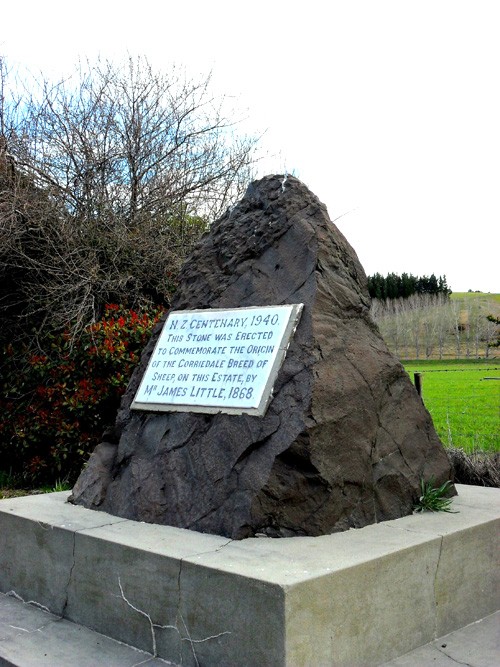Corriedale sheep monument

Stone memorial commemorating the origin of the Corriedale breed of sheep. The stone was erected in 1940 as part of the New Zealand centennial celebrations.
The Corriedale was first bred at a north Otago property of the same name, by James Little, a native Scot. The pasture at the property suited neither the sparse-grazing Merino, nor the Romney, which prefer thicker grass cover. By cross-breeding the two, Little created a sheep which thrived in the conditions.
Corriedales are dual-purpose sheep, meaning they are used for meat and wool. Today, they graze in virtually all conditions in New Zealand, Australia, USA and parts of South America.
Read more about Corriedale sheep on Te Ara - the Encyclopedia of New Zealand.
Credit
Image: Bruce Comfort, 2011.
The breeding foundation has some errors as I understand things.
There is no Romney bloodlines in the Corriedale sheep.
Little crossed Merinos with english longwools, Leicester and Lincoln, the resulting halfbred sheep were then selectively including line bred to refine a more stable bloodline that Little named the Corriedale, the name of one of two properties he managed in North Otago.
The first cross halfbreds that became a main breed were not line bred by many as the firstcross genetics gave a stronger animal and it was some time before the corriedale established as a breed in its own right.
Many breeders of first cross halfbred sheep disparagingly referred to the early Corriedales as "inbred halfbreds"
The wool was a low micron crimped high lustre general purpose yarn suitable for clothing making and the carcass much higher yielding and bulkier muscled for meat production.
The Corriedale is the longest established recognised cross bred in the world

 Facebook
Facebook Google
Google Reddit
Reddit StumbleUpon
StumbleUpon Twitter
Twitter







Community contributions